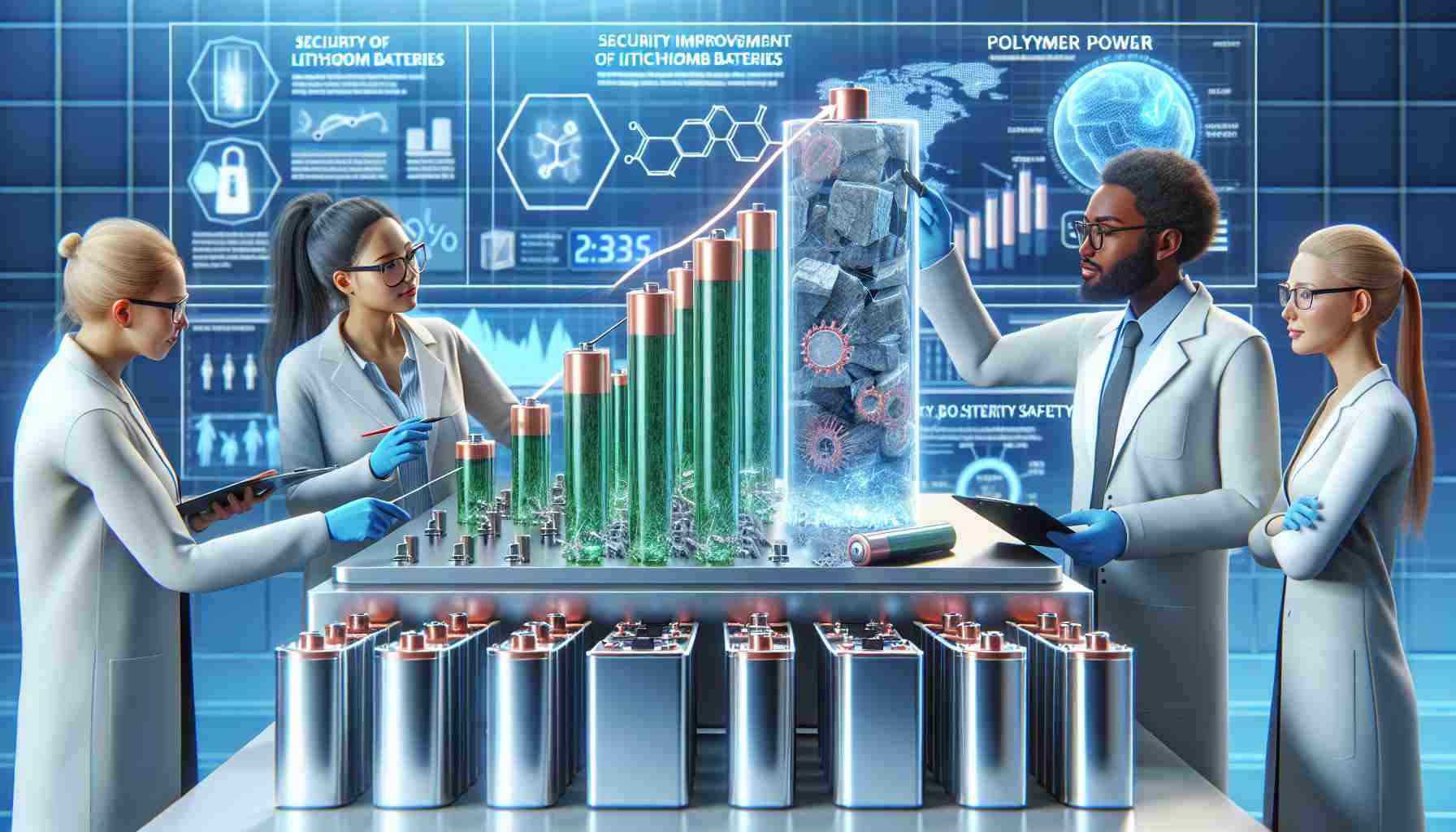Researchers at Incheon National University have made advancements in the safety of lithium batteries. Lithium-ion batteries are commonly used in today’s world, but there is a process that can hinder their functionality – internal short circuit caused by direct contact between the cathode and the anode (conductors that form the circuit inside the battery). To prevent this, separators made of polyolefins – a type of polymer that maintains separation – are used. Unfortunately, these separators can melt at higher temperatures, and inadequate electrolyte absorption (necessary for conducting charges between electrodes) can lead to short circuits and decreased battery efficiency. Several different methods have been proposed to solve these problems.
One of these methods is applying ceramic coatings to the separators, which improves their pressure and heat resistance. However, this method increases the thickness of the separators, reducing their adhesion and negatively impacting battery performance. Another approach is the use of polymer coatings in a process known as adhesive polymerization. This involves attaching individual units (monomers) to the separators to give them the desired properties.
In a recent study published in the journal “Energy Storage Materials,” researchers at Incheon National University present successful adhesive polymerization on polypropylene (PP) separators, using a uniform layer of silicon dioxide (SiO2). This research was conducted by a team led by Dr. Jeongsik Yun from the Department of Energy and Chemical Engineering at Incheon National University. The research results, published online on December 13, 2023, were described in volume 65 of the journal “Energy Storage Materials” in February 2024.
Inspired by the need for high-performance materials for electric vehicle batteries, Dr. Yun has been working intensively in this field. His goal is not only to improve battery performance but also to alleviate consumer concerns about battery explosions, potentially influencing the adoption of electric vehicles.
During the study, Dr. Yun focused on the thermal stability of a commercial battery separator made of polyolefins, which are susceptible to high temperatures. To improve the thermal stability of the separators, the research team coated them with nanoparticles of silicon dioxide (SiO2), which are thermally resistant materials.
Several modifications were made to the PP separator as part of the study. Initially, it was coated with a layer of polyvinylidene fluoride, a chemical chosen to enhance the electrolyte’s affinity and thermal stability, as well as introduce adhesive reactions. Then, the separator underwent adhesive polymerization using methacrylate molecules, and finally, it was coated with a layer of SiO2 particles. These modifications made the separator stronger, more heat-resistant, reduced the growth of lithium dendrites, and improved cycling performance.
Furthermore, the modifications not only preserved energy storage in Li-ion batteries per unit volume but also outperformed other coating methods in terms of cell performance. This technique shows great promise in creating durable separators and advancing the use of lithium-ion batteries in electric vehicles and energy storage systems.
In summary, this study presents a reliable method for creating innovative and durable separators for lithium-ion batteries, potentially paving the way for a more environmentally friendly future!
FAQ Section based on the main topics and information presented in the article:
1. What is internal short circuit in lithium-ion batteries?
Internal short circuit in lithium-ion batteries refers to the direct contact between the cathode and the anode, which hinders their functionality.
2. What are the issues with using polyolefin separators in lithium-ion batteries?
Polyolefin separators can melt at higher temperatures, and inadequate electrolyte absorption can lead to short circuits and decreased battery efficiency.
3. What methods have been proposed to solve the issues with polyolefin separators?
One method is applying ceramic coatings to the separators, which improves their pressure and heat resistance. Another approach is using polymer coatings in a process called adhesive polymerization.
4. What are the results of the recent study conducted by researchers at Incheon National University?
The researchers at Incheon National University successfully carried out adhesive polymerization on polypropylene separators using a silicon dioxide layer. This made the separator more heat-resistant and improved battery efficiency.
5. What are the potential applications of this technique?
Adhesive polymerization technique holds great promise in creating durable separators for lithium-ion batteries, contributing to the development of electric vehicles and energy storage systems.
Key term definitions and jargon used in the article:
– Lithium-ion batteries: a type of batteries commonly used in today’s world.
– Separators: conductors that separate the cathode from the anode inside a battery.
– Polyolefin: a type of polymers used as separators in lithium-ion batteries.
– Nanoparticles: very small particles used for coating separators.
– Adhesive polymerization: the process of adding individual units to separators to give them desired properties.
Suggested related links to main domains (not subpages) if the URL is accurate:
– Jaime I University
– BMC Power
– Electrochemical Society
– Energy Storage News
The source of the article is from the blog queerfeed.com.br
